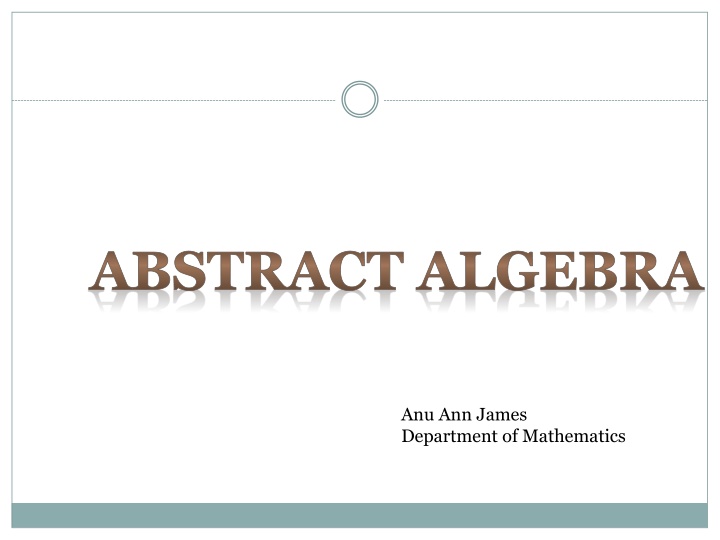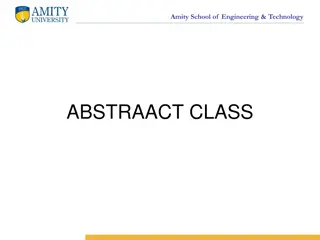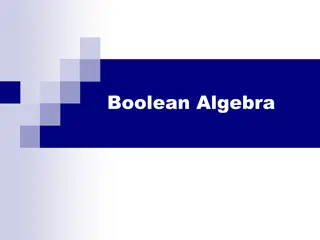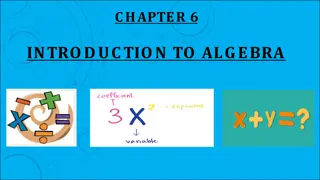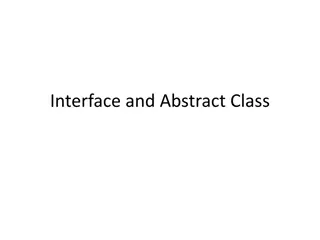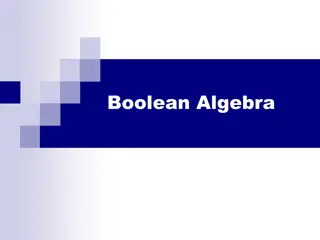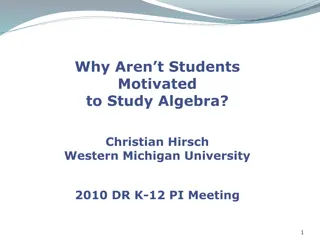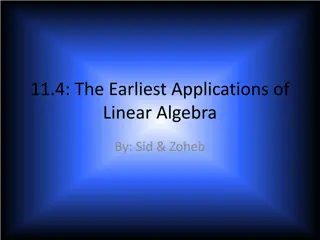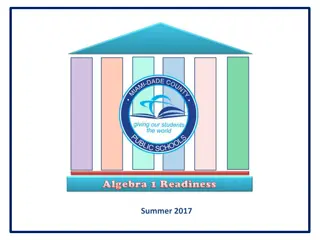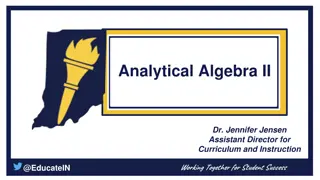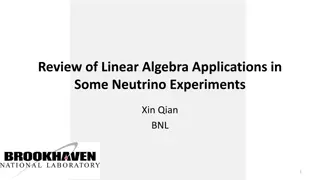ABSTRACT ALGEBRA
Abstract Algebra delves into algebraic structures like groups, rings, and fields, exploring homomorphisms and factor groups. Learn about direct products, abelian groups, and theorems that provide insights into finite and small abelian groups. This informative study serves as a valuable resource in understanding algebraic concepts.
Download Presentation

Please find below an Image/Link to download the presentation.
The content on the website is provided AS IS for your information and personal use only. It may not be sold, licensed, or shared on other websites without obtaining consent from the author.If you encounter any issues during the download, it is possible that the publisher has removed the file from their server.
You are allowed to download the files provided on this website for personal or commercial use, subject to the condition that they are used lawfully. All files are the property of their respective owners.
The content on the website is provided AS IS for your information and personal use only. It may not be sold, licensed, or shared on other websites without obtaining consent from the author.
E N D
Presentation Transcript
ABSTRACT ALGEBRA Anu Ann James Department of Mathematics
CONTENTS Introduction 1. 2. Direct Products & Finitely Generated Abelian Groups 3. Factor Groups & Homomorphisms 4. Conclusion
INTRODUCTION In Algebra, which is a broad division of Mathematics, Abstract Algebra is the study of algebraic structures. Algebraic structures include groups, rings, fields, modules, vector spaces, lattices and algebras. Algebraic structures, with their associated homomorphisms, form mathematical categories.
Direct Products & Finitely Generated Abelian Groups Direct Products Definition
Theorem 1 Theorem 2 Corollary
Definition Theorem 3 Example:
Sol. The Structure of Finitely Generated Abelian Groups Theorem 4
Definition Theorem 5 Theorem 6 Theorem 7
Factor Groups & Homomorphisms Factor Groups In a quotient of a group, the equivalence class of the identity element is always a normal subgroup of the original group, and the other equivalence classes are precisely the cosets of that normal subgroup. The resulting quotient is written G/H, where G is the original group and H is the normal subgroup. Theorem 8
Theorem 9 Theorem 10 Theorem 11
CONCLUSION The theorems that we stated above give us complete structural information about all sufficiently small Abelian groups, in particular, about all finite Abelian groups
REFERENCES John b. Fraleigh A First Course in Abstract Algebra, 7th Edition
